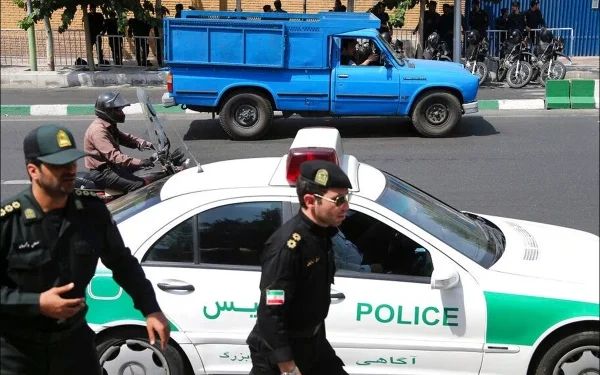Zahedan, Iran – A sudden and violent attack by armed militants on a court complex in the northeastern city of Zahedan has sent shockwaves across Iran, leaving several injured and raising fears of multiple casualties. On the same day, another attack targeted a Revolutionary Guards base in Sardasht, located in West Azerbaijan province, further highlighting the growing instability and security challenges in parts of the country.
According to multiple local and regional news sources, these attacks appear to be part of a wider pattern of insurgent violence, with groups aiming to destabilize state institutions and military infrastructure in Iran’s more volatile border provinces. The militant group Jaish al-Adl has claimed responsibility for the Zahedan assault, further complicating an already tense security landscape.
Details of the Attack on Zahedan Court Compound
Coordinated Assault Leaves Injuries, Casualties Feared
The court compound in Zahedan, the capital of Sistan and Baluchestan Province, came under sudden attack when armed assailants stormed the building, firing indiscriminately. Witnesses and local media reported scenes of chaos, with court staff and civilians running for cover amid the sound of gunfire.
Initial reports from Mehr News Agency and Arab media outlets confirm that the attackers specifically targeted the judges’ chambers, suggesting a calculated operation rather than a random act of violence. Though the exact number of casualties remains unconfirmed, several people have been reported injured, and security officials fear fatalities.
Authorities have cordoned off the area and launched a full-scale investigation. Emergency response teams were dispatched quickly, and injured individuals were transported to nearby hospitals.
Jaish al-Adl Claims Responsibility
Who Is Jaish al-Adl?
Shortly after the attack, the Sunni extremist group Jaish al-Adl (Army of Justice) issued a statement claiming responsibility. This group has a history of operating in Sistan and Baluchestan, a province marked by ethnic and sectarian tensions.
Jaish al-Adl emerged in 2012 as a successor to the defunct militant group Jundallah, which was previously active in the same region. The group primarily claims to represent the Baluch Sunni minority, who have long alleged economic marginalization and political suppression under the predominantly Shia Iranian government.
Over the years, Jaish al-Adl has been responsible for numerous attacks on Iranian security forces, including ambushes, bombings, and kidnappings. The group is designated a terrorist organization by Iran, and its activities have led to several high-level security crackdowns in the southeastern border provinces.
Militant Objectives and Regional Impact
The group claims its activities are aimed at defending the rights of Iran’s Sunni Baluch population, but the Iranian government accuses it of receiving foreign backing, particularly from regional rivals and anti-Iran proxy networks. Their involvement in the Zahedan court attack reinforces concerns over cross-border militant operations that may be coordinated from neighboring Pakistan or Afghanistan, both of which share porous borders with Iran.
Simultaneous Violence in Sardasht: IRGC Base Targeted
While security forces in Zahedan were still grappling with the court assault, news emerged of a separate violent incident in Oghlan village, near Sardasht in West Azerbaijan province, located in northwestern Iran.
Details of the Sardasht Attack
According to a statement from Colonel Shakir, a spokesperson for the Revolutionary Guards’ West Azerbaijan Martyrs’ Base, unidentified militants opened fire indiscriminately on a military base, resulting in the death of one IRGC officer and injuries to another.
The attack, which appears to have been carried out under the cover of darkness, is suspected to be the work of Kurdish separatist militants, although no group has officially claimed responsibility as of yet.
Sardasht, due to its proximity to the Iraqi Kurdistan border, has frequently seen clashes between Iranian forces and Kurdish militant factions such as the Kurdistan Free Life Party (PJAK) and Komala. These groups have long called for greater autonomy or independence for the Kurdish population in western Iran.
The Broader Picture: Rising Tensions in Iran’s Border Provinces
Security Hotspots: Sistan & Baluchestan and West Azerbaijan
Both Sistan and Baluchestan and West Azerbaijan are among the most restive and militarized provinces in Iran. They are home to ethnic and religious minorities who often complain of discrimination, economic neglect, and political exclusion.
The recent attacks expose the fragile nature of Iran’s internal security, especially in areas where armed separatist and insurgent movements operate with some level of local support or benefit from cross-border sanctuaries.
In Sistan and Baluchestan, the Iranian government continues to battle drug trafficking networks, Sunni insurgents, and cross-border terrorism. Meanwhile, West Azerbaijan faces recurring threats from Kurdish nationalist organizations seeking greater self-rule.
Iranian Government Response and Public Reaction
Ongoing Investigations and Security Crackdowns
Following the twin attacks, Iranian authorities launched extensive security operations in both Zahedan and Sardasht. Local law enforcement, along with members of the Islamic Revolutionary Guard Corps (IRGC), have increased surveillance, conducted raids, and initiated intelligence-gathering efforts to apprehend the perpetrators.
Authorities have promised swift justice and reassured the public that security measures will be tightened, particularly around government buildings, military installations, and judicial compounds.
However, such assurances have not prevented a growing sense of public unease, especially among residents of the affected provinces who fear further violence or retaliatory crackdowns.
Sectarian and Ethnic Tensions: A Deeper Root Cause
The recent surge in militant activity cannot be viewed in isolation from the longstanding ethnic and sectarian divisions within Iran.
- Sistan and Baluchestan is predominantly populated by ethnic Baluch and Sunni Muslims, while Iran’s central government and military apparatus are predominantly Shia.
- In West Azerbaijan, the Kurdish population has historically sought cultural recognition, language rights, and autonomy—demands that have frequently been met with military suppression.
Iran’s hardline approach toward dissent, coupled with limited avenues for political expression, has created an environment in which underground movements and armed resistance continue to flourish.
International Reactions and Implications
Though the attacks have not yet triggered formal reactions from the international community, regional analysts are closely monitoring the situation. Any rise in militant violence in Iran can have spillover effects for neighboring countries such as Iraq, Pakistan, and Afghanistan.
Iran has in the past blamed foreign intelligence services, including those of the United States, Israel, and Saudi Arabia, for supporting insurgent movements in its border regions—claims which those nations have denied.
With tensions already high due to geopolitical rivalries, nuclear diplomacy standstills, and Iran’s regional involvements, these internal attacks could further complicate the security calculus.
Conclusion: Heightened Instability and the Call for Strategic Reform
The back-to-back attacks in Zahedan and Sardasht have highlighted a grim reality: Iran continues to face internal security threats from both Sunni and ethnic separatist groups. These incidents underscore the need for a comprehensive and inclusive strategy—not just increased militarization but also deeper socio-political reforms that address the root causes of marginalization.
With investigations underway and public pressure mounting, the Iranian government faces a difficult task: restoring public trust, enhancing security, and ensuring that the voices of minority communities are heard and addressed peacefully.
Until such measures are taken, Iran may continue to experience episodic insurgent violence, especially in provinces where historical grievances meet modern-day militant agendas.

























